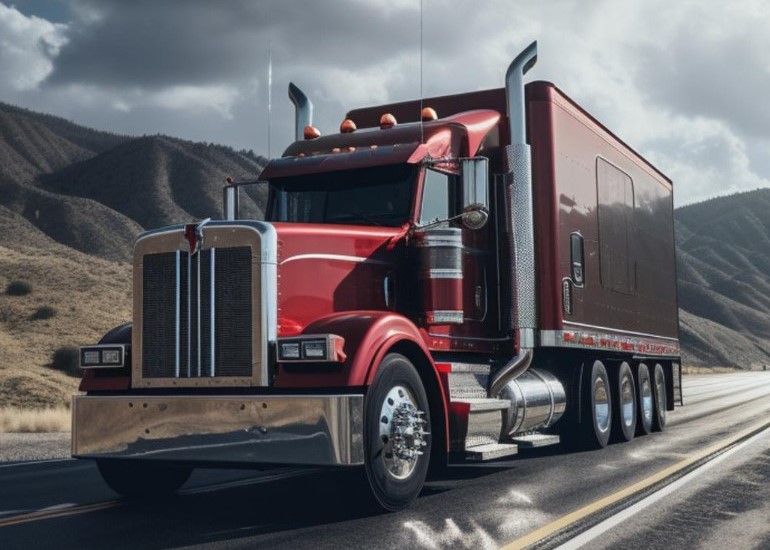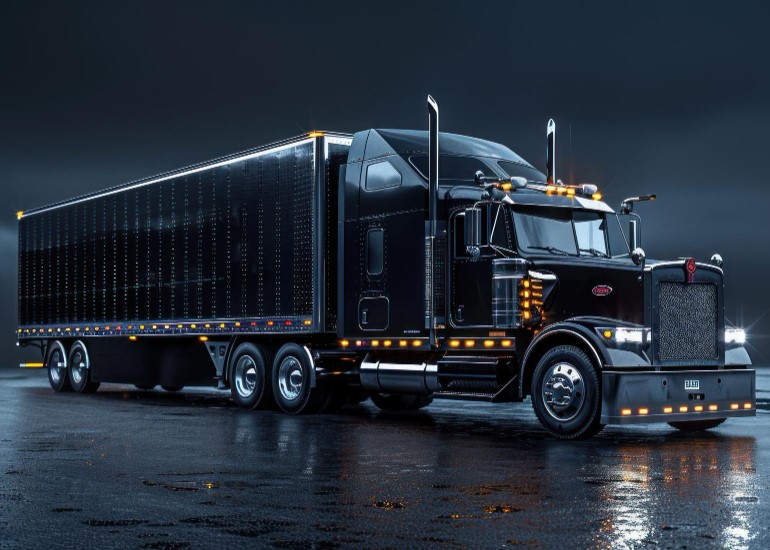Online CDL Permit Practice Tests
state Oklahoma
Ace Your Oklahoma CDL Exam: Free Practice Tests
Don't waste your time - start practicing with free online tests today
Our free online CDL practice tests cover all the essential topics, including General Knowledge, Air Brakes, and Combination Vehicles. Practice at your own pace, anytime, anywhere, to build your confidence and ensure you’re fully prepared for your CDL exam.
General Knowledge Test
Air Brakes
Test
Combination Vehicle Test
Step-by-Step Guide to Getting a CDL in Oklahoma
Step 1: Determine Your CDL Class and Endorsements
Before applying for a Commercial Driver License (CDL) in Oklahoma, it’s essential to identify the appropriate CDL class and any necessary endorsements based on the type of vehicle you intend to operate and the nature of the cargo you plan to transport.
CDL Classes in Oklahoma
Oklahoma offers three primary CDL classes:
Class A: Required for operating a combination of vehicles with a combined Gross Vehicle Weight Rating (GVWR) of 26,001 pounds or more, provided the GVWR of the vehicle(s) being towed exceeds 10,000 pounds.
Class B: Pertains to a single vehicle with a GVWR of 26,001 pounds or more, or any such vehicle towing another vehicle not exceeding 10,000 pounds GVWR. This includes large buses and trucks.
Class C: Applies to single vehicles with a GVWR less than 26,001 pounds that require a hazardous materials or passenger endorsement. This includes vehicles designed to transport 16 or more passengers (including the driver) or those transporting hazardous materials requiring placarding.
CDL Endorsements in Oklahoma
Depending on the vehicle type and cargo, additional endorsements may be required:
Double and Triple Trailers (T): Required for drivers operating vehicles with double or triple trailers.
Tank Vehicle (N): Necessary for drivers transporting liquids or gases in bulk containers.
Hazardous Materials (H): Mandatory for drivers hauling hazardous materials that require placarding under federal regulations. This endorsement requires passing a special written examination and undergoing a background check as mandated by the Transportation Security Administration (TSA).
Combination Hazardous Materials and Tank Vehicle (X): For drivers who operate tank vehicles carrying hazardous materials, combining the testing requirements for both the Tank Vehicle and Hazardous Materials endorsements.
Passenger (P): Required for drivers operating vehicles designed to transport 16 or more passengers, including the driver. This endorsement necessitates passing a special knowledge examination and skills tests in a passenger vehicle.
School Bus (S): Necessary for drivers operating school buses. Applicants must pass a special knowledge examination and skills tests in a school bus.
CDL Restrictions in Oklahoma
Certain restrictions may be applied to a CDL based on the vehicle used during testing or specific qualifications:
E Restriction: Prohibits operating a commercial vehicle with a manual transmission.
K Restriction: Limits the CDL holder to intrastate driving only within Oklahoma.
L Restriction: Restricts the driver from operating vehicles with air brakes.
O Restriction: Prohibits operating a tractor-trailer combination.
Understanding these classes, endorsements, and restrictions is crucial for determining the type of CDL you need and ensuring compliance with Oklahoma’s licensing requirements.
Step 2: Obtain a Commercial Learner's Permit (CLP):
Acquiring a Commercial Learner’s Permit (CLP) is a crucial step toward obtaining a Commercial Driver License (CDL) in Oklahoma. The CLP allows you to practice driving a commercial vehicle under supervision, preparing you for the CDL skills test.
Eligibility Requirements
To apply for a CLP in Oklahoma, you must:
Age: Be at least 18 years old to drive within Oklahoma (intrastate). To operate across state lines (interstate) or transport hazardous materials, you must be at least 21.
Driver’s License: Hold a valid Oklahoma Class D driver’s license.
Identification: Provide proof of U.S. citizenship or lawful permanent residency and proof of Oklahoma residency.
Medical Certification: Possess a valid Department of Transportation (DOT) Medical Examiner’s Certificate if required by your self-certification status.
Application Process
Self-Certification:
Determine the type of commercial driving you will engage in (interstate or intrastate, exempted or non-exempted) and complete the self-certification accordingly.Documentation:
Gather the necessary documents:Identification: Primary ID such as a birth certificate or passport.
Residency: Proof of Oklahoma residency.
Social Security Number: Provide your Social Security number; the physical card is not required.
Medical Certification: A valid DOT Medical Card, if applicable.
Knowledge Tests:
Study the Oklahoma CDL Manual to prepare for the required knowledge tests, which may include:General Knowledge Test: Mandatory for all applicants.
Endorsement Tests: If you plan to operate specific types of vehicles or carry particular cargo, additional tests may be necessary (e.g., air brakes, passenger transport, hazardous materials).
Testing:
Visit a Service Oklahoma Licensing Office to take the vision screening and the applicable written knowledge tests.Issuance of CLP:
Upon passing the required tests, you will receive paperwork to present to a Licensed Operator, who will issue your CLP.
CLP Validity and Use
Validity Period: The CLP is valid for one year.
Holding Period: You must hold the CLP for at least 14 full days before taking the CDL skills test; the skills test can be taken on the 15th day.
Supervised Driving: While holding a CLP, you are permitted to operate a commercial motor vehicle only when accompanied by a qualified CDL holder who occupies the front passenger seat.
Important Considerations
Entry-Level Driver Training (ELDT): Completion of ELDT is required before taking the skills test, except for certain exemptions (e.g., removing air brake restrictions or automatic transmission restrictions).
Preparation: Thorough preparation using the CDL Driver Manual is essential for successfully passing the knowledge tests.
By following these steps and meeting all requirements, you will be well-prepared to obtain your Commercial Learner’s Permit in Oklahoma, bringing you closer to achieving your CDL.
Step 3: Complete Entry-Level Driver Training (ELDT):
Completing Entry-Level Driver Training (ELDT) is a federally mandated requirement for individuals seeking to obtain a Commercial Driver License (CDL) in Oklahoma. This training ensures that new drivers possess the necessary knowledge and skills to operate commercial motor vehicles safely and effectively.
Who Needs to Complete ELDT
You must complete ELDT if you are:
Applying for a Class A or Class B CDL for the first time.
Upgrading from a Class B to a Class A CDL.
Seeking to obtain a School Bus (S), Passenger (P), or Hazardous Materials (H) endorsement for the first time.
Individuals who held a valid CDL or the specified endorsements before February 7, 2022, are exempt from this requirement.
Training Components
ELDT consists of two main parts:
Theory Instruction: This classroom-based or online training covers essential topics such as vehicle operation, safety protocols, and regulatory compliance. Trainees must achieve a minimum score of 80% on assessments to pass this portion.
Behind-the-Wheel (BTW) Training: This practical training involves hands-on driving experience, including both range and public road exercises. While there is no minimum hour requirement, trainees must demonstrate proficiency in all required skills.
Approved Training Providers
ELDT must be completed through a provider registered with the Federal Motor Carrier Safety Administration’s (FMCSA) Training Provider Registry. In Oklahoma, several institutions offer ELDT programs, including Oklahoma State University-Oklahoma City (OSU-OKC) and Oklahoma City Community College (OCCC).
Training Sequence
It is recommended to complete the ELDT theory training before attempting the written knowledge tests for your CLP. However, ELDT must be completed before taking the CDL skills test or the knowledge test for the H endorsement.
Verification and Compliance
Upon completion of ELDT, the training provider will submit your certification to the FMCSA’s Training Provider Registry. The Oklahoma Department of Public Safety will verify this information before allowing you to proceed with the CDL skills test or endorsement examinations.
By successfully completing ELDT through an approved provider, you ensure compliance with federal regulations and enhance your preparedness for a career as a commercial driver.
Step 4: Practice with Your CLP:
After obtaining your Commercial Learner’s Permit (CLP) in Oklahoma, it’s essential to gain practical driving experience under supervision. This practice is crucial for developing the skills necessary to operate a commercial vehicle safely and to prepare for the CDL skills test.
Supervised Driving Requirements
While holding a CLP, you are permitted to operate a commercial motor vehicle (CMV) only when accompanied by a qualified CDL holder. The supervising driver must:
Possess a valid Oklahoma CDL of the same class or higher than the vehicle being operated.
Have the appropriate endorsements for the vehicle and cargo.
Be seated in the front passenger seat to provide immediate assistance and instruction.
Areas of Focus During Practice
Your supervised driving sessions should encompass various aspects of commercial vehicle operation, including:
Vehicle Inspections: Conduct thorough pre-trip, en-route, and post-trip inspections to ensure vehicle safety and compliance.
Basic Vehicle Control: Practice maneuvers such as straight-line backing, offset backing, parallel parking, and alley docking.
On-Road Driving: Navigate through different traffic conditions, including urban, rural, and highway settings, focusing on lane management, turns, merging, and adherence to traffic laws.
Vehicle Selection for Practice
It’s advisable to practice in a vehicle that matches the class and type you intend to operate professionally. The vehicle used for your CDL skills test will determine any restrictions placed on your license. For instance:
Testing in a vehicle with an automatic transmission may result in a restriction limiting you to automatic vehicles.
Using a vehicle without air brakes during the test may lead to a restriction against operating vehicles equipped with air brakes.
Duration and Validity of the CLP
Holding Period: Oklahoma mandates that you hold the CLP for a minimum of 14 full days before taking the CDL skills test; the skills test can be taken on the 15th day.
Validity Period: The CLP is valid for one year, providing ample time to complete required training and testing.
Additional Considerations
Entry-Level Driver Training (ELDT): Ensure completion of ELDT before attempting the CDL skills test, as mandated by federal regulations.
Documentation: Carry your CLP and any required medical certifications during all practice sessions.
Compliance: Adhere strictly to all traffic laws and regulations during practice to build safe driving habits and ensure readiness for the CDL skills test.
By diligently practicing under the supervision of a qualified CDL holder and focusing on the areas outlined above, you will be well-prepared to successfully complete the CDL skills test and advance your career as a commercial driver in Oklahoma.
Step 5: Schedule and Pass the CDL Skills Test:
After holding your Commercial Learner’s Permit (CLP) for at least 14 full days, you are eligible to take the Commercial Driver License (CDL) skills test in Oklahoma. This test evaluates your ability to operate a commercial vehicle safely and competently.
Scheduling the Skills Test
To schedule your CDL skills test:
Service Oklahoma Licensing Office:
Visit the Service Oklahoma website and use the “Save Your Spot” feature to schedule your test. Select “Drive test – Commercial Driver License” and choose a location convenient for you.Third-Party Examiners:
Alternatively, you can schedule your skills test with a certified third-party examiner authorized to conduct CDL tests in Oklahoma.
When scheduling, have your driver’s license number and availability ready. Be aware that appointment slots may fill quickly, so plan accordingly.
Preparing for the Skills Test
The CDL skills test comprises three main components:
Pre-Trip Inspection:
Demonstrate your knowledge of the vehicle’s safety features and readiness by conducting a thorough inspection.Basic Control Skills Test:
Show your ability to control the vehicle through various maneuvers, such as backing up, turning, and parking.Road Test:
Drive in various traffic situations to exhibit safe driving practices, including lane changes, turns, and adherence to traffic laws.
Ensure you are well-versed in these areas and practice extensively to increase your chances of passing.
Test Day Requirements
On the day of your skills test:
Vehicle Provision:
You must provide the appropriate class of commercial vehicle for the test; vehicles are not supplied by the testing facility.Documentation:
Bring your valid Oklahoma driver’s license, CLP, and any required medical certifications.Time Allocation:
Allocate approximately two hours for the complete testing process.
After the Test
Successful Completion:
If you pass all components, the examiner will stamp your DL18 certificate. Present this certificate at a Service Oklahoma Licensing Office or a Licensed Operator to have your CDL issued.Partial Completion:
If you pass certain sections but fail others, you will receive credit for the sections passed and will only need to retake the failed portions.Retesting:
In the event of a failed test, you may reschedule, but be aware that additional fees may apply.
Fees
Fees for obtaining a CDL in Oklahoma vary based on the class and duration of the license. For example:
Class A (4-Year Credential):
Application Fee: $25.00
Credential Fee: $56.50
Total: $81.50
Refer to the Service Oklahoma website for a comprehensive fee schedule.
By thoroughly preparing and understanding the requirements, you can approach the CDL skills test with confidence and take a significant step toward your career as a commercial driver in Oklahoma.
Step 6: Obtain Your CDL:
After successfully passing the CDL skills test, the final step is to obtain your official Commercial Driver License (CDL) in Oklahoma. This process involves a few key actions to ensure you receive your CDL promptly and in compliance with state regulations.
Issuance of Your CDL
Documentation Submission: Upon passing the skills test, the examiner will provide you with a stamped DL18 certificate. You must present this certificate, along with your valid Oklahoma Class D driver’s license and any required medical certifications, at a Service Oklahoma Licensing Office or a Licensed Operator to have your CDL issued.
Fees and Validity
Application and Credential Fees: The total cost for obtaining a CDL in Oklahoma varies based on the class and duration of the license. For example, a Class A CDL with a 4-year credential includes an application fee of $25.00 and a credential fee of $56.50, totaling $81.50.
License Validity: CDLs in Oklahoma are typically valid for four years. Ensure you renew your license before its expiration to maintain your commercial driving privileges.
Additional Considerations
Endorsements: If you plan to operate specialized vehicles or transport specific types of cargo, ensure you have obtained the necessary endorsements (e.g., Hazardous Materials, Passenger, School Bus). Each endorsement may require additional testing and fees.
Medical Certification: Maintain a valid Department of Transportation (DOT) Medical Examiner’s Certificate if required by your self-certification status. Keep this certification current to avoid any interruptions in your CDL privileges.
Compliance with Regulations: Adhere to all federal and state regulations governing commercial drivers, including hours-of-service rules, vehicle maintenance requirements, and safety protocols.
By following these steps and ensuring all requirements are met, you will successfully obtain your CDL in Oklahoma, enabling you to pursue a career as a commercial driver.
Additional Considerations:
When pursuing a Commercial Driver License (CDL) in Oklahoma, it’s important to be aware of various factors that can influence your licensing process and driving privileges.
Endorsements and Restrictions
Endorsements: Depending on the type of vehicle you intend to operate or the cargo you plan to transport, specific endorsements may be required. For instance, operating double or triple trailers necessitates a “T” endorsement, while transporting hazardous materials requires an “H” endorsement. Each endorsement involves additional testing to demonstrate specialized knowledge.
Restrictions: Certain limitations may be placed on your CDL based on the vehicle used during testing or specific qualifications. For example, an “E” restriction indicates that the driver is limited to operating vehicles with automatic transmissions. Understanding these restrictions is crucial to ensure compliance and to operate vehicles within your licensed capabilities.
Medical Requirements
Medical Certification: CDL applicants must meet specific medical standards to ensure they are physically capable of operating commercial vehicles safely. This includes obtaining a valid Department of Transportation (DOT) Medical Examiner’s Certificate, which must be carried at all times while operating a commercial vehicle.
Medical Variances: In certain cases, drivers with specific medical conditions may be granted variances, allowing them to operate commercial vehicles under specified conditions. It’s essential to understand any medical restrictions or requirements applicable to your situation.
Military Personnel Provisions
License Extensions: Active duty military personnel, civilian contractors, and their dependents stationed outside of Oklahoma may be eligible for extensions on their driver’s licenses. This provision ensures that their licenses remain valid during deployment and for a specified period upon return.
Renewal Options: Military personnel have the option to renew or replace their licenses online or by mail, facilitating the maintenance of valid driving credentials while serving away from home.
Compliance and Safety
Regulatory Adherence: CDL holders must comply with both state and federal regulations governing commercial driving. This includes adhering to hours-of-service rules, vehicle maintenance standards, and safety protocols to ensure the well-being of all road users.
Citation Consequences: Violations can lead to citations that may impact your driving record and employment opportunities. It’s important to understand the procedures for addressing citations, including the potential for hearings and the implications of unpaid fines.
By considering these additional factors and staying informed about the requirements and responsibilities associated with holding a CDL in Oklahoma, you can ensure a smoother licensing process and a successful career in commercial driving.
Frequently asked questions
What are the basic requirements to apply for a CDL in Oklahoma?
To apply for a CDL in Oklahoma, you must have a valid Oklahoma Class D driver’s license, be at least 18 years old for intrastate driving or 21 for interstate driving or transporting hazardous materials, provide proof of U.S. citizenship or lawful permanent residency, submit a valid medical examiner’s certificate, and pass all required knowledge and skills tests.
Do I need to obtain a Commercial Learner's Permit (CLP) before applying for a CDL?
Yes. You must first obtain a CLP and hold it for at least 14 full days before you are eligible to take the CDL skills test.
What is Entry-Level Driver Training (ELDT), and is it required?
ELDT is mandatory training that must be completed before taking the CDL skills test or certain endorsement exams. It includes both theory and behind-the-wheel instruction and must be completed through an approved training provider listed in the FMCSA Training Provider Registry.
How do I prepare for the CDL knowledge test?
You should study the Oklahoma CDL Driver Manual, which contains all the information needed to pass the general knowledge test and any applicable endorsement tests. Practice tests are also recommended to reinforce your understanding and improve test readiness.
Is a medical examiner's certificate (DOT Medical Card) required?
Yes. Most CDL applicants must have a valid DOT medical card issued by a certified medical examiner. This confirms that you meet the physical qualifications required to operate a commercial vehicle safely.
Can I add endorsements when I first apply for a CDL?
Yes. You may apply for and test for endorsements such as Hazmat, Tank, Passenger, or School Bus at the same time you apply for your initial CDL. Each endorsement requires an additional knowledge test, and in some cases, a skills test.
What does the CDL skills test involve?
The CDL skills test consists of three parts: a pre-trip vehicle inspection, a basic vehicle control test, and an on-road driving test. Each part is designed to assess your ability to operate a commercial vehicle safely and confidently.
Are there fees associated with obtaining a CDL?
Yes. The total cost depends on the class of license and endorsements you apply for. For example, a Class A CDL includes an application fee and a credential fee. Additional endorsement tests may also carry separate fees.
Can military experience help in obtaining a CDL?
Yes. Oklahoma participates in the Military Skills Test Waiver program. If you have recent experience operating military vehicles, you may be eligible to waive the CDL skills test. However, you must still pass the applicable knowledge tests and provide the required documentation.
How long is a CDL valid in Oklahoma?
A CDL in Oklahoma is typically valid for four years. You are responsible for renewing your license before it expires and for keeping your medical certification and endorsements current to maintain your CDL privileges.



